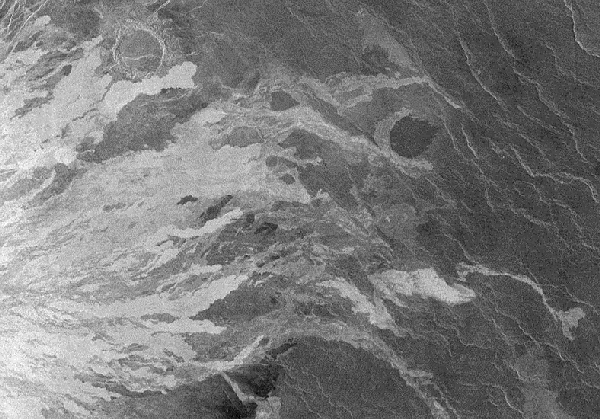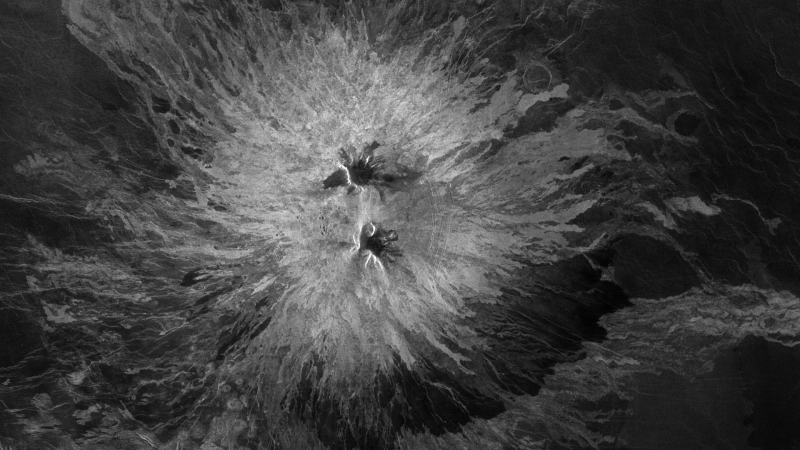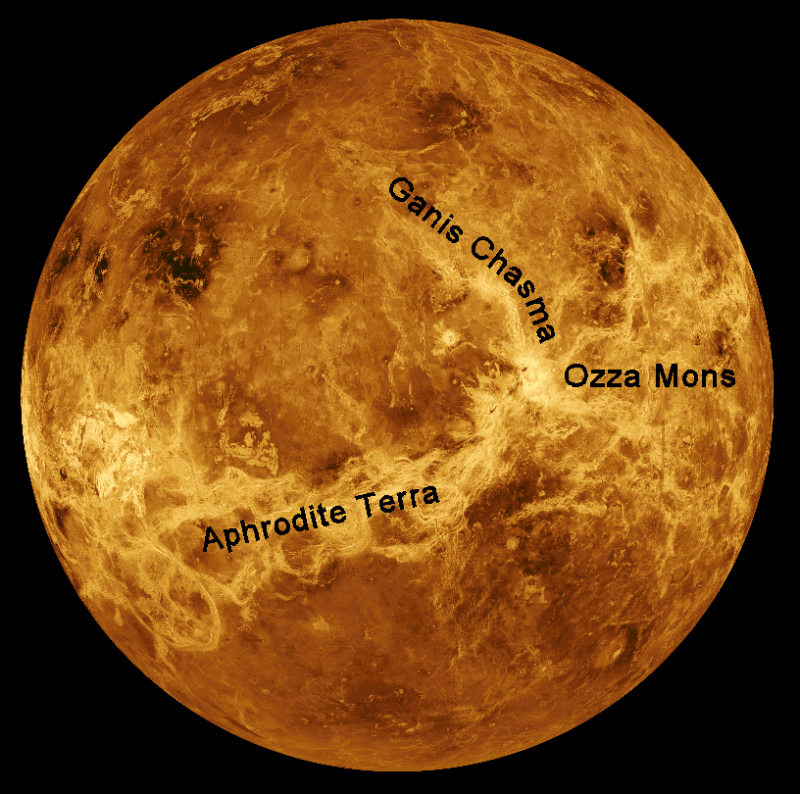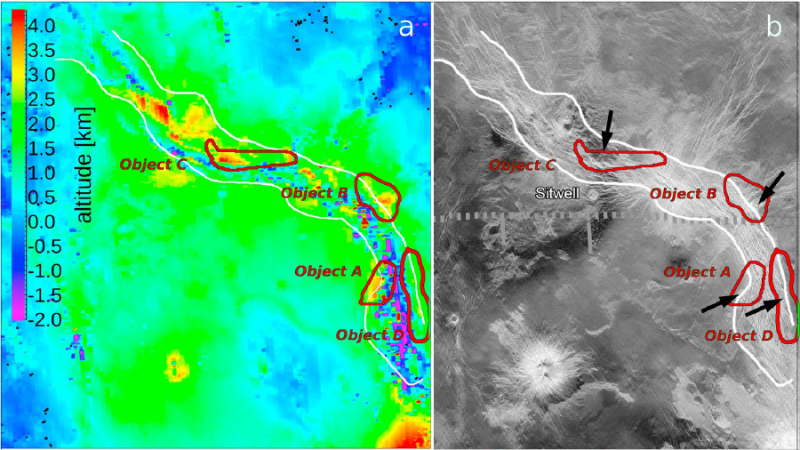Planetary scientists have found what they think is a smoking gun proving that the planet Venus is geologically alive—volcanoes in the act of erupting lava. Short-lived pulses of heat energy, sensed through the planet’s thick atmosphere by the Venus Express spacecraft, are explained as the red-hot glow of active pools and flows of molten rock.
Venus is often called our sister planet, being much like Earth in its size and rocky composition, but it’s more like hell than Earth. Its atmosphere is a thick blanket of carbon dioxide topped with a haze of sulfuric acid that completely hides the surface from view.
The greenhouse effect from this atmosphere makes Venus hotter than the fiercest pizza oven, at about 850 degrees Fahrenheit. The air pressure on the ground is like being 3,000 feet deep in the ocean, and the CO2 gas is so thick that spacecraft have fallen through it to land without needing parachutes—although their electronics quickly failed in the searing heat.
Between 1975 and 1982, a handful of Soviet landers made the only visible-light images we have of the surface of Venus. All the pictures show a landscape of volcanic rocks.
Between 1990 and 1994, the Magellan spacecraft used radar to map the surface of Venus in detail. We’ve learned that, other than some impact craters, the surface consists entirely of different kinds of lava. The volcanoes responsible range from little domes to sets of huge fractures thousands of miles long.

So we know Venus is covered with lava, most of it looking fresh. The Soviet landers recorded lightning and thunder, typical in volcanic eruptions. And satellites have detected short-lived pulses of sulfur gases in the atmosphere, also typical of eruptions. It’s a safe guess Venus didn’t stop all of its eruptions, forever, just yesterday.


